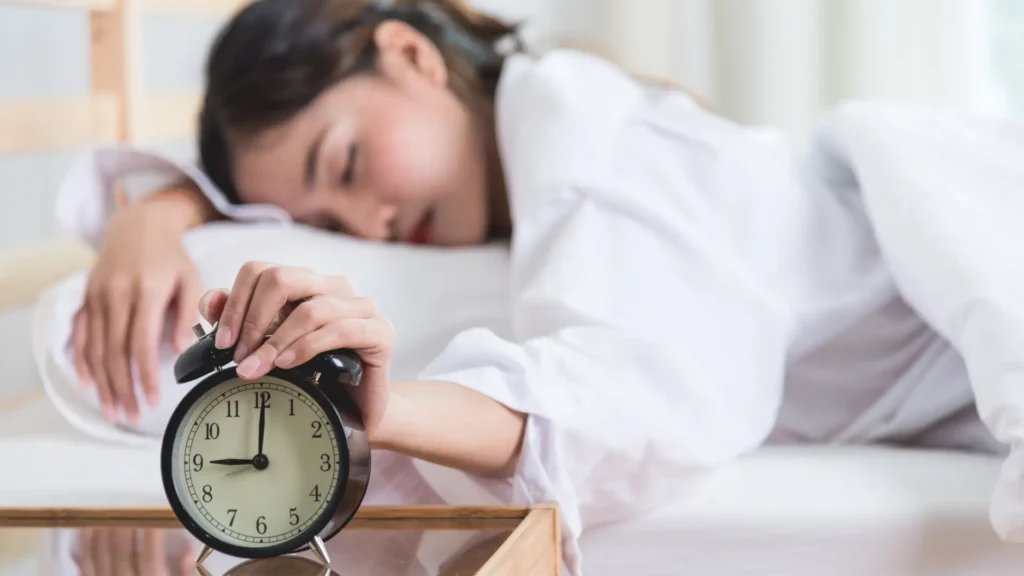What is Hypersomnia?
Hypersomnia, also known as excessive daytime sleepiness or hypersomnolence, is a condition characterized by persistent feelings of drowsiness throughout the day. Those affected struggle to stay awake, often falling asleep at inappropriate times, such as during work or meals. Unlike occasional tiredness, hypersomnia is a chronic condition that significantly impacts daily life.
Hypersomnia vs. Insomnia
So how does hypersomnia differ from other sleep disorders such as insomnia?
- Insomnia involves difficulty falling asleep or staying asleep through the night, leading to inadequate sleep and subsequent daytime fatigue.
- In contrast, individuals with hypersomnia have no trouble sleeping. In fact, they may sleep excessively (more than 10 hours a night) yet still feel excessively sleepy during the day.
Exploring Somnolence
The term “somnolence” refers to the state of strong desire for sleep, or sleeping for unusually long periods. It’s closely related to hypersomnia, which can be considered an extreme form of somnolence where the desire for sleep becomes irresistible and disruptive.
Types of Hypersomnia
Hypersomnia manifests in various forms, each with distinguishing features and potential implications for those affected.
Idiopathic Hypersomnia
This disorder is characterized by chronic excessive sleepiness that isn’t caused by other sleep disorders. Individuals often experience:
- Prolonged sleep episodes at night
- Severe difficulty with awakening, even after ample sleep
- A non-restorative nap tendency; feeling unrefreshed even after daytime rest
The impact on daily life can be significant, hindering work, education, and social engagements due to an overwhelming need to sleep.
Primary Hypersomnia
Genetic factors seem to influence this category of hypersomnia. Notable conditions include:
- Kleine-Levin Syndrome: A rare form marked by recurrent episodes of excessive sleep needs that can last days to weeks, interrupting normal life routines.
These episodes are often interspersed with periods of normal sleep patterns, making the condition a perplexing one for both patients and doctors.
Secondary Hypersomnia
This type is a consequence of other medical conditions such as:
- Head trauma
- Depression
- Side effects from medication
Addressing the primary condition often alleviates the hypersomnolence, making accurate diagnosis pivotal.
Narcolepsy
A complex neurological disorder that presents with:
- Excessive daytime sleepiness
- Cataplexy: a sudden loss of muscle tone triggered by strong emotions (predominantly in Type 1 Narcolepsy)
Narcolepsy Type 1 includes cataplexy, whereas Type 2 does not. Both types disturb daily activities due to the unpredictability of sleep attacks and potential dangers associated with sudden muscle weakness.
Hypersomnia Symptoms

The hallmark sign of hypersomnia is persistent drowsiness. An individual suffering from hypersomnia might sleep for more than 11 hours in a day, yet feel the need to take naps, and still struggle with feelings of sleepiness.
Accompanying symptoms can include:
- Challenges in rousing from extended periods of sleep
- Sluggish thought and speech processes
- Memory problems
- Short-temperedness
- Feelings of unease
- Decreased vitality
- In some instances, hallucinations may also occur.
Hypersomnia: Causes and Risk Factors

Neurochemical Imbalances
A leading hypothesis in understanding the causes of hypersomnia revolves around neurochemicals. Our brains utilize these chemicals to regulate sleep and wakefulness. Imbalances or dysregulation in the production or function of certain neurochemicals like GABA (gamma-aminobutyric acid), which promotes sleep, could potentially lead to hypersomnia disorders.
Genetic Influence
Hypersomnia can also have a genetic component. Certain inheritable forms of this condition, such as some cases of primary hypersomnia and narcolepsy, have been linked to specific genes. For example, a study published in the journal “Nature Genetics” revealed a strong association between narcolepsy and variations in the HLA-DQB1*06:02 gene.
Brain Injuries and Structural Abnormalities
Sleep-wake mechanisms can be disrupted by traumatic brain injuries or structural abnormalities in the brain. This disruption can result in excessive sleepiness disorders. For instance, damage to the hypothalamus—an area of the brain that regulates sleep—can trigger symptoms of hypersomnia.
Underlying Conditions
The onset of hypersomnia symptoms can often be traced back to underlying medical, psychiatric, or sleep-related conditions. These might include depression, multiple sclerosis, nerve damage due to head trauma, a tumor, damage to the central nervous system, medication use or sleep apnea. Therefore, identifying and treating these conditions becomes crucial in managing hypersomnia.
These factors collectively highlight the multifaceted nature of hypersomnia’s causes and risk factors. A better understanding of these elements can contribute significantly towards optimal diagnosis and treatment strategies for this condition.
Who is at risk for Hypersomnia?
People with conditions that make them sleepy during the day are most at risk for hypersomnia.
These conditions include: sleep apnea, narcolepsy, and restless legs syndrome. Additionally, certain medications, such as sedatives or tranquilizers, can also increase the risk of developing hypersomnia.
Moreover, individuals with a family history of hypersomnia may have a higher likelihood of developing the condition themselves. This suggests a genetic component to hypersomnia’s risk factors.
Furthermore, certain demographic groups appear to be more susceptible to hypersomnia. For instance, it has been observed that men are more likely than women to experience idiopathic hypersomnia—a form of hypersomnia with an unknown cause.
Overall, being aware of these risk factors can help individuals and healthcare professionals in identifying potential cases of hypersomnia early on and implementing appropriate management strategies.
Hypersomnia: Tests and Diagnosis

A medical professional will analyze your symptoms and medical history to determine whether you have hypersomnia. You might be diagnosed with hypersomnia if you’ve been experiencing the following for at least three months:
- Daytime fatigue
- Compulsive need for sleep
- Long, unrefreshing naps
- Struggling to awaken even after long or normal sleep durations
A physical examination can help assess your level of alertness.
The same doctor might suggest that the following tools may be used to evaluate hypersomnia:
- Sleep diary: In this diary, you record your sleep and wake times throughout the night to monitor your sleep patterns.
- Epworth Sleepiness Scale: This scale measures sleepiness levels to establish the severity of the condition.
- Multiple Sleep Latency Test: During this test, you take a supervised nap during the day while a device records the different stages of sleep you go through.
- Polysomnogram: This requires an overnight stay at a sleep center where a device tracks brain activity, eye movements, heart rate, oxygen levels, and respiratory function.
Hypersomnia: Treatment Options

Treatment for hypersomnia depends on the root cause and severity of the symptoms. Sometimes, adopting lifestyle modifications like sticking to a regular sleep routine, refraining from stimulants, and maintaining good sleep habits can make a significant difference.
For some individuals, a doctor might recommend stimulant medications to encourage wakefulness throughout the day. Cognitive-behavioral therapy or psychotherapy could also be beneficial for addressing any psychological elements contributing to hypersomnia. Remember to always consult a healthcare professional for an accurate diagnosis and tailored treatment approach.
The treatment will hinge on the specific type and cause of hypersomnia. Here are some options:
Stimulant medications typically utilized for narcolepsy management, such as:
- modafinil (Provigil), a medication that encourages wakefulness
- amphetamines like methylphenidate
- pitolisant (Wakix), another type of stimulant medication
- sodium oxybate (Xyrem), which counters muscle weakness and sleepiness associated with narcolepsy
- flumazenil (Romazicon), which reverses benzodiazepines’ effects
For some individuals, lifestyle alterations may help manage their sleep or better cope with hypersomnia. Some tips include:
- adhering to a consistent sleep routine by waking up and going to bed at the same time each day
- avoiding certain behaviors like eating or working in bed to enhance sleep quality
- following a diet rich in whole foods to help maintain natural energy levels
- Joining a support group could also be beneficial.
Hypersomnia: In the long term

Certain individuals diagnosed with hypersomnia may experience an improvement in their symptoms through appropriate lifestyle modifications and medication administration, but it’s important to note that complete alleviation may not be achieved by all.
Although hypersomnia doesn’t pose a direct threat to life, its presence can substantially affect the quality of life of those affected, making it challenging to partake in regular activities such as work, study, and other day-to-day tasks.
It’s crucial for individuals battling hypersomnia to inform their healthcare professional if they’re currently under treatment for another health condition. This is because certain medications, including anesthesia, could potentially interact and interfere with the treatment process.
Hypersomnia: Preventions
While it may not be possible to completely prevent certain types of hypersomnia, you can certainly lower your risk. This can be achieved by cultivating a serene sleep environment and steering clear of alcohol and certain medications.
Addressing underlying health issues is also key, as neglecting these could potentially result in further complications.
Read More: How to Beat Obstructive Sleep Apnoea Naturally in 5 Steps
Proper Diagnosis and Management
Don’t ignore constant sleepiness. It’s crucial to get a proper diagnosis from a healthcare professional. Treatments can include lifestyle adjustments and medical interventions, designed to manage the symptoms and improve daily functioning.
Consult a Healthcare Professional
Persistent daytime sleepiness should never be dismissed as mere tiredness. If you’re experiencing these symptoms, consult a healthcare professional for evaluation. Your sleep health matters — don’t underestimate it!
Remember, ignorance isn’t bliss when it comes to your health. Knowledge is power; use it to take control of your well being.
If you enjoyed this article, head over to Deepsomnia for more sleep tips!



